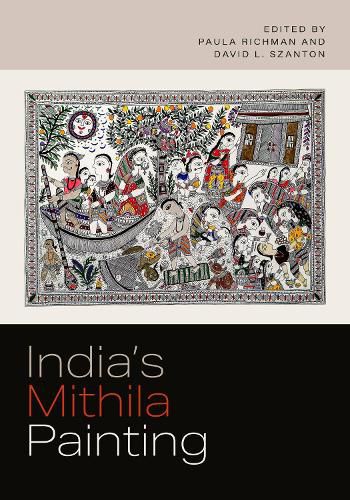Readings Newsletter
Become a Readings Member to make your shopping experience even easier.
Sign in or sign up for free!
You’re not far away from qualifying for FREE standard shipping within Australia
You’ve qualified for FREE standard shipping within Australia
The cart is loading…






A woman's art form transforms from home to high art
Since at least the fifteenth century, Hindu women in the Mithila region of northern India have been painting images of deities, flora and fauna symbolizing fertility and prosperity, and floor designs that sacralize sites for ritual within their homes. Their artwork remained ephemeral since its plant-based colors faded over time. In response to an extended drought that led to widespread crop failure in the 1960s, the Indian government's All India Handicraft Board provided high-quality paper to the women of Mithila to test the income-generating possibilities of transferring wall and floor artwork to a new medium. The unique Mithila aesthetic, novel compositions, and precise linework won enthusiastic buyers in New Delhi and abroad. The small number of women painters expanded across the ranks of the social hierarchy and even included a few men. They developed individual styles and depicted novel subjects such as village history, their own life stories, the tsunami in Sri Lanka, social justice, protecting trees, and changing social norms.
Major international museums now house Mithila collections, and individuals around the world own paintings. This volume, the first to present an up-to-date analysis of the history and practitioners of Mithila painting, includes contributions from Mithila artists, anthropologists, art historians, historians of Indian religions and specialists of visual culture, gender studies, and translation studies.
$9.00 standard shipping within Australia
FREE standard shipping within Australia for orders over $100.00
Express & International shipping calculated at checkout
Stock availability can be subject to change without notice. We recommend calling the shop or contacting our online team to check availability of low stock items. Please see our Shopping Online page for more details.
A woman's art form transforms from home to high art
Since at least the fifteenth century, Hindu women in the Mithila region of northern India have been painting images of deities, flora and fauna symbolizing fertility and prosperity, and floor designs that sacralize sites for ritual within their homes. Their artwork remained ephemeral since its plant-based colors faded over time. In response to an extended drought that led to widespread crop failure in the 1960s, the Indian government's All India Handicraft Board provided high-quality paper to the women of Mithila to test the income-generating possibilities of transferring wall and floor artwork to a new medium. The unique Mithila aesthetic, novel compositions, and precise linework won enthusiastic buyers in New Delhi and abroad. The small number of women painters expanded across the ranks of the social hierarchy and even included a few men. They developed individual styles and depicted novel subjects such as village history, their own life stories, the tsunami in Sri Lanka, social justice, protecting trees, and changing social norms.
Major international museums now house Mithila collections, and individuals around the world own paintings. This volume, the first to present an up-to-date analysis of the history and practitioners of Mithila painting, includes contributions from Mithila artists, anthropologists, art historians, historians of Indian religions and specialists of visual culture, gender studies, and translation studies.